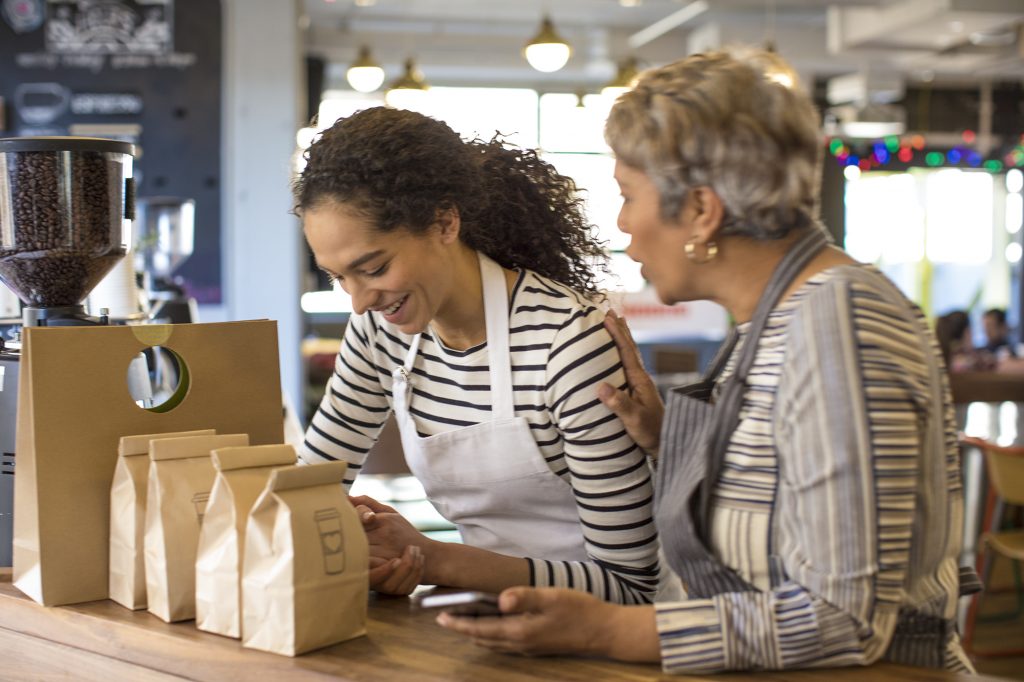
Your store is no longer a store, but retail as a service

Think of your retail store not as racks and shelves, maximizing every square inch to hold product after product, but as a service—a way to build an experience, each product a character in a larger story that uses intelligent technologies to help guide the way.
“Generally speaking, we’re talking about a number of different services being offered to these digitally native brands, whether that’s brand curation, making sure that the right brand adjacencies are put together in a given space,” according to Retail Prophet Doug Stephens. “Staffing and training is provided, marketing and event management. Many offer platforms to retail partners as well, and give awareness of foot traffic throughout the space, and demographics.”
Think of it this way: consumers now research, shop and order online. That is what has forced this rethinking of the retail floor. And with this new-found power the consumer has, retailers must think about their business in terms of their changing priorities.
[msce_cta layout=”image_center” align=”center” linktype=”blue” imageurl=”https://www.microsoft.com/en-us/industry/blog/wp-content/uploads/2019/05/Industry-Refresh-V3_Retail_R1-_B_Blog.png” linkurl=”https://info.microsoft.com/ww-ondemand-The-Five-Most-Important-Decisions-Facing-Todays-Retail-CEOs.html” linktext=”register for the on demand webinar now” imageid=”32835″ ][/msce_cta]
That increases the challenge for stores that maintain a brick-and-mortar presence. Stephens refers to stores like Beta and Story NYC that have taken the lead on this emerging trend, which seeks to give context to a product and provide an experience in how the product might be used. Sales staff are trained to familiarize themselves with each product so they can educate their customers.
In addition, according to Stephens, this new breed of retail store helps emerging companies by giving them “a significant amount of intelligence on who is interacting with their brands,” he says. “We’re seeing a real explosion in this space and to me it really marks a transition in the retail industry.”
One way Stephens notes this transition is in how the stores redefine space and audience. At Plano, Texas-based Neighborhood Goods, founder Matt Alexander curates each product to relate to one another, and holds events so customers can experience the intent of each product’s creator. He will have only about 15 brands in the store at any given time.
Neighborhood Goods has, in essence, exchanged the traditional sales floor employee with limited knowledge of a lot of products to an events manager and a curator who knows the smallest details of a very limited number of products.
So is it working? Having a store act as a showroom does appear to be having an effect. Stephens says that people aren’t shopping less. They’re just shopping differently. Still, from the store’s perspective, it’s a risky proposition—the partner company could run out of funding and shut down, or could expose the store to credit worthiness issues, plus the upfront capital required to have the necessary technologies in place to enable purchases and collect data—but the returns can be worth the risk.
To respond to such possible issues, Microsoft partnered with Sunrise Technology, which is adding digital services to dead shelf space in Kroger supermarkets. These small screens offer advertising and dynamic pricing that can draw in customers and, at the same time, provide another source of revenue for retailers.
Thanks to technology, not only does this moribund space come alive, it also adds to a level of experience and engagement for a customer to give them an even better shopping experience.
The strategy can work at a smaller scale as well. You can find dynamic digital displays with nearly every product at Beta, for example. Macy’s, which has taken a stake in the Palo Alto-based company, has opened its own Market@Macy’s in 12 of its stores to gather analytics and provide the same type of curated product experience.
To learn more about how you can reimagine your retail experience, watch the on-demand webinar The Five Most Important Decisions Facing Today’s Retail CEOs, which Stephens shares these insights and more on the changing trends in retail.




